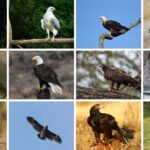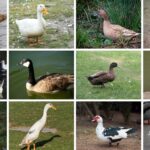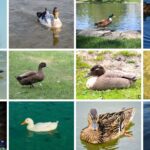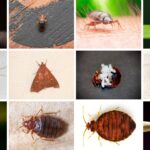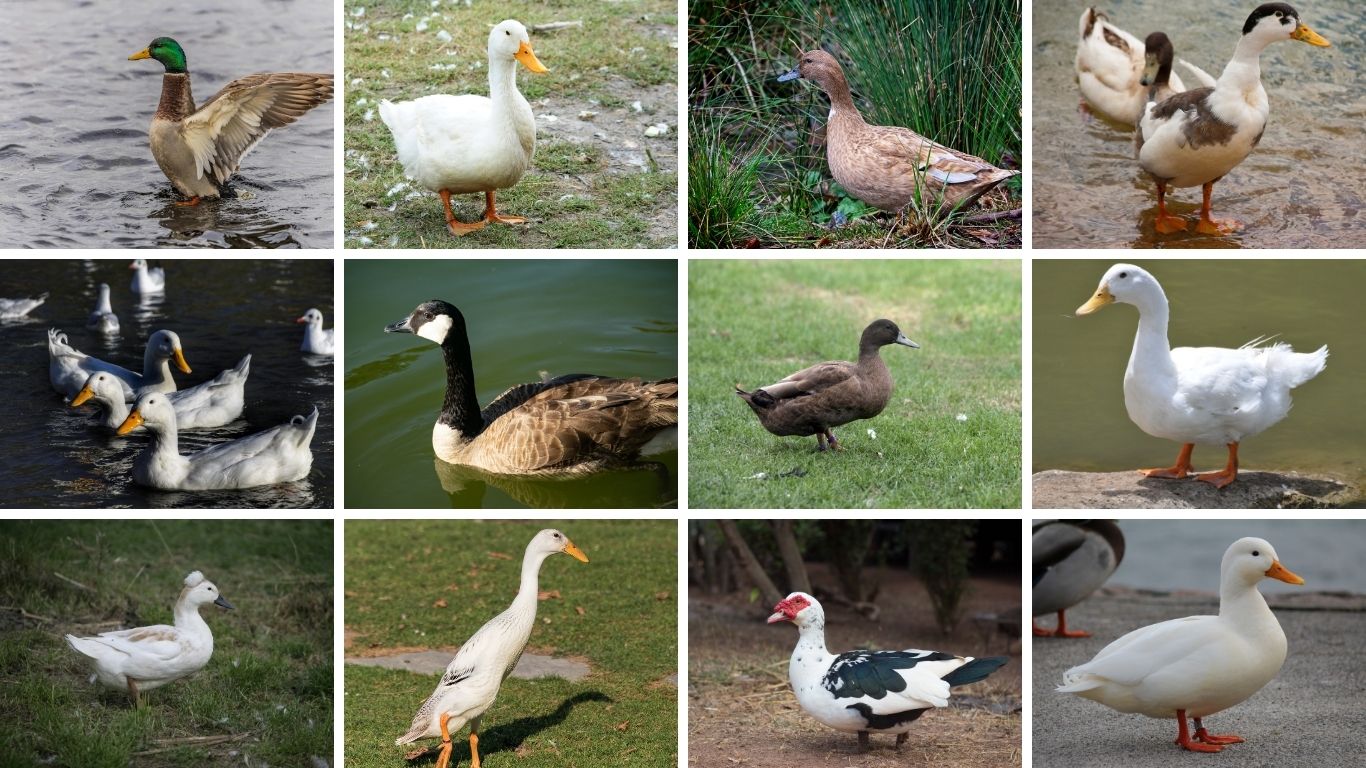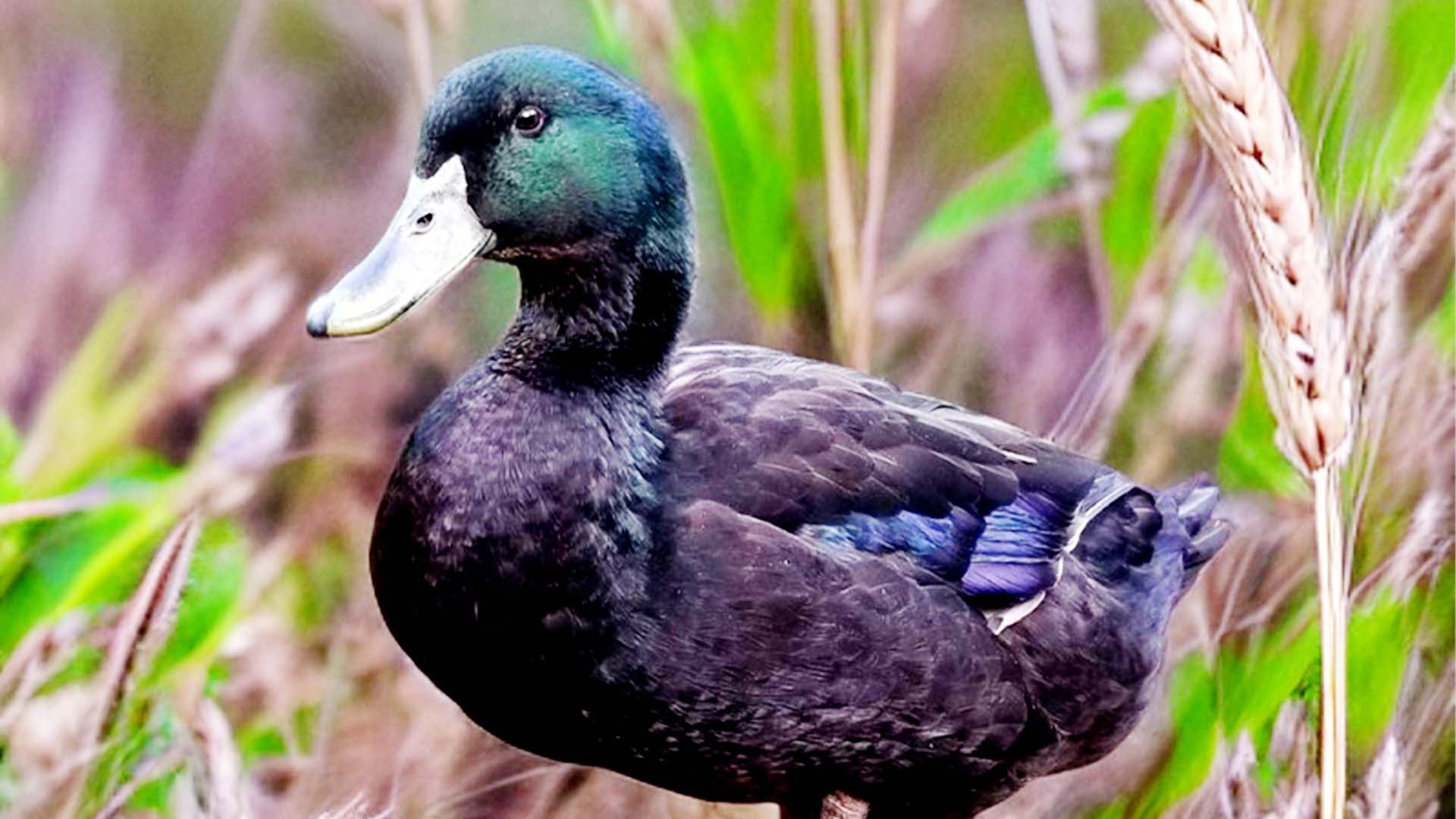Mallard ducks are incredibly diverse, ranging from the classic wild green-headed drake to unique domestic and hybrid varieties. In this guide, you’ll discover 13 distinct types of mallards—including rare subspecies, farm-raised breeds, and naturally occurring hybrids—each with its own look, behavior, and habitat preferences. Let’s explore their fascinating differences.
1. Wild Mallard
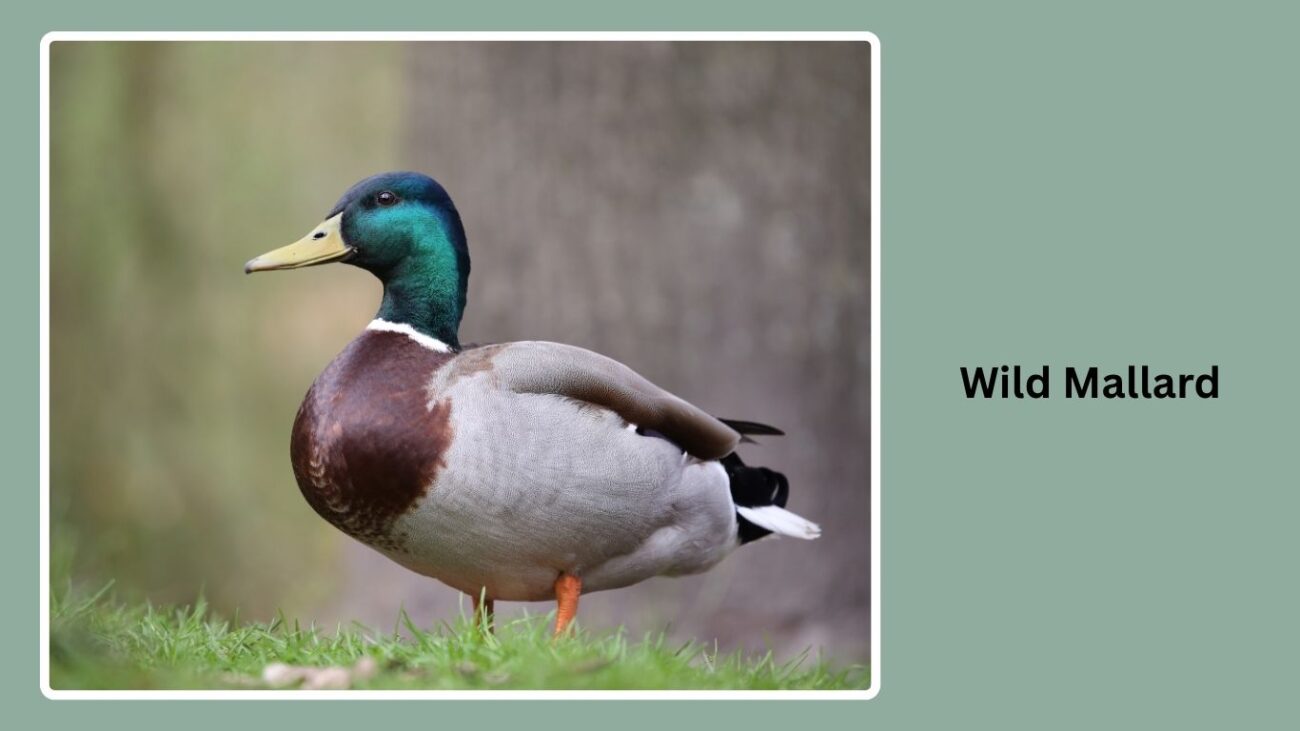
The wild mallard (Anas platyrhynchos) is the most common and widespread duck species across the Northern Hemisphere. Known for its distinctive coloration, especially the iridescent green head of the male, the wild mallard is the ancestor of most domestic duck breeds. These ducks are highly adaptable and thrive in various habitats, from rural wetlands to city parks.
Identification
- Males: Green head, yellow bill, white neck ring, chestnut breast
- Females: Mottled brown with orange bill
- Both sexes: Blue speculum bordered by white on wings
- Size: About 20–26 inches long
- Weight: 1.5 to 3.5 pounds
Habitat
Wild mallards are found in freshwater wetlands, lakes, rivers, ponds, marshes, and even urban parks. They prefer areas with plenty of vegetation for cover and feeding.
Behaviors
Mallards are dabbling ducks, meaning they feed on the surface of the water rather than diving. They are social, often seen in flocks, and form seasonal pair bonds during the breeding season.
Lifecycle and More
Mallards breed in spring and summer. The female lays 8–13 eggs and incubates them for about 28 days. Ducklings are precocial—able to walk and feed shortly after hatching. Most reach maturity in one year. Mallards can live 5–10 years in the wild, sometimes longer in protected environments.
2. Domestic Mallard

The domestic mallard (Anas platyrhynchos domesticus) is directly descended from the wild mallard. Over thousands of years, humans have selectively bred these ducks for various traits like size, color, and egg production. Domestic mallards vary widely in appearance and are found on farms, in backyards, and in parks.
Identification
- Color varies: white, black, brown, or mixed patterns
- Smaller wings and heavier bodies than wild mallards
- Often lack strong flight ability
- Tamer behavior compared to wild counterparts
Habitat
Domestic mallards live near human settlements—farms, gardens, and urban ponds. They rely on people for food and shelter and are not typically found in the wild.
Behaviors
These ducks are less wary of humans, often friendly, and used to regular feeding. They rarely migrate and often remain near food sources.
Lifecycle and More
Domestic mallards have a similar reproductive cycle to wild ones but may lay more eggs annually. They are bred for meat, eggs, or ornamental purposes. Lifespan ranges from 8–12 years under care.
3. Rouen Duck
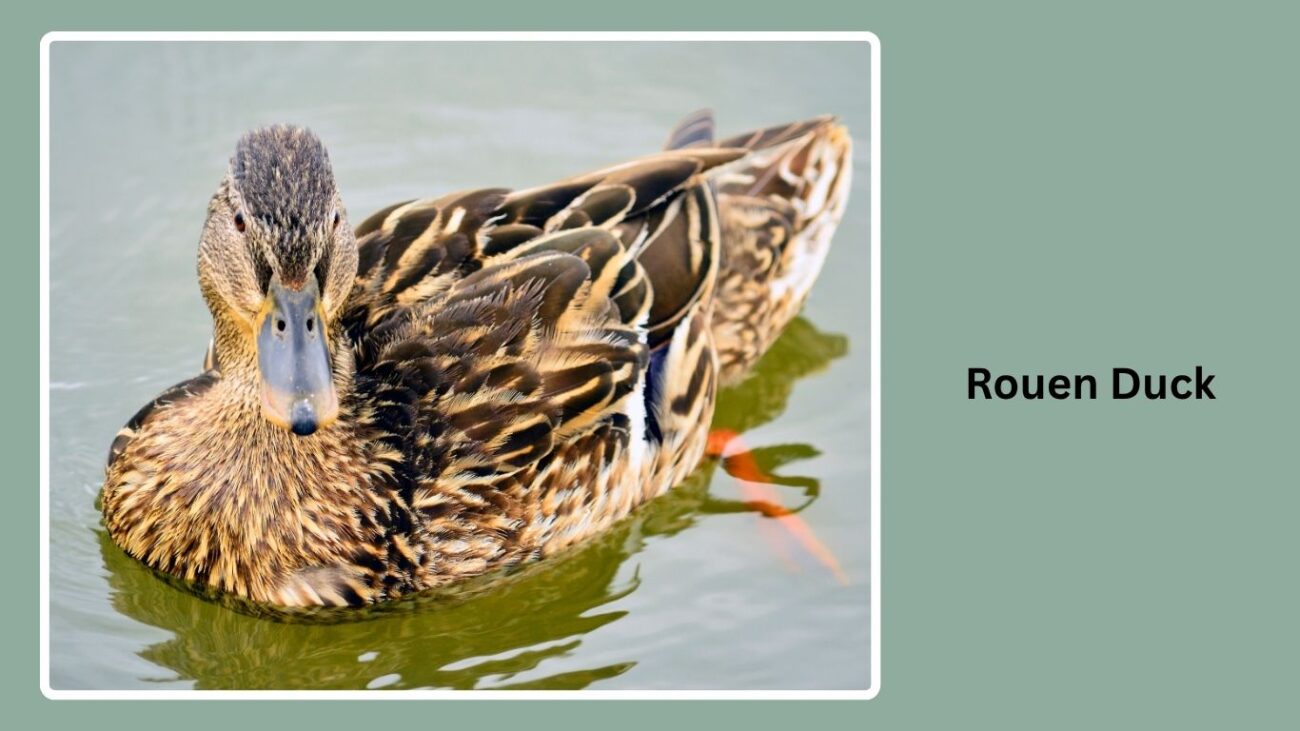
The Rouen duck is a heavy domestic breed developed in France and bred to resemble wild mallards in color but with a much larger body. It is popular for meat production and ornamental use due to its calm demeanor and beautiful plumage.
Identification
- Similar to wild mallard in coloring but much larger
- Males: Green head, thick neck, deep chest
- Females: Mottled brown with distinct penciling
- Short, stocky build with orange legs
Habitat
Rouen ducks are farm birds and do best in calm, managed environments with access to clean water and shelter. Not suited for wild living or flying.
Behaviors
They are gentle, quiet, and non-aggressive. Rouens are poor foragers and prefer hand-feeding. They do not fly well due to their size.
Lifecycle and More
Rouens mature slowly compared to other breeds. Hens lay fewer eggs per year, and their bulk makes them ideal for meat. Lifespan ranges from 7–10 years with proper care.
4. Call Duck
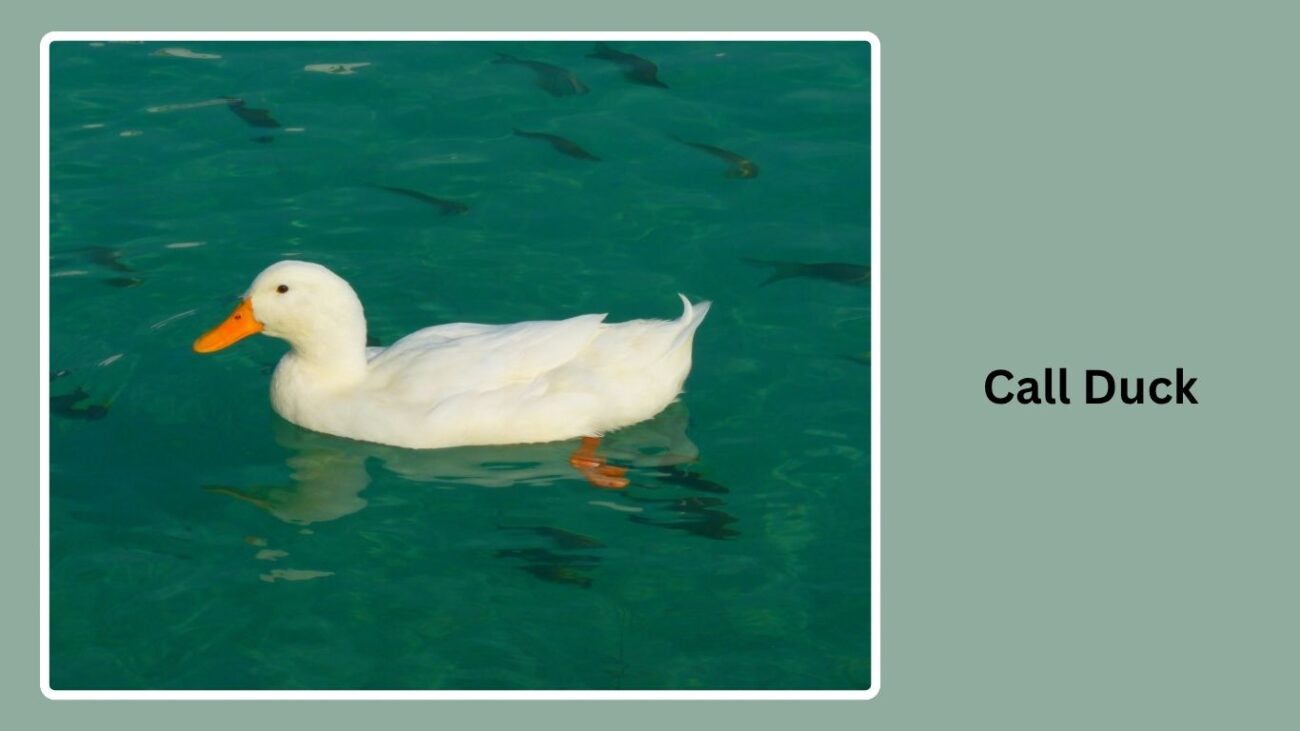
The Call Duck is a miniature domestic breed originally developed in the Netherlands. It was bred to attract wild ducks for hunting purposes due to its high-pitched and loud call. Today, it’s popular as a pet and show bird because of its small size and charming appearance.
Identification
- Very small: 1.5–2.5 pounds
- Short bill, round head, compact body
- Comes in many color varieties: white, gray, black, pastel, etc.
- Bright orange legs and expressive eyes
Habitat
Call ducks are typically kept in backyard farms, aviaries, or ornamental ponds. They require clean water and predator-proof housing due to their small size.
Behaviors
They are social, playful, and often vocal. Call ducks enjoy human interaction and do well in pairs or groups. Not suitable for wild environments due to their domestic traits.
Lifecycle and More
They reach maturity quickly and lay a moderate number of eggs. Their loud call is a defining trait. Call ducks can live 7–10 years with good care.
5. Welsh Harlequin
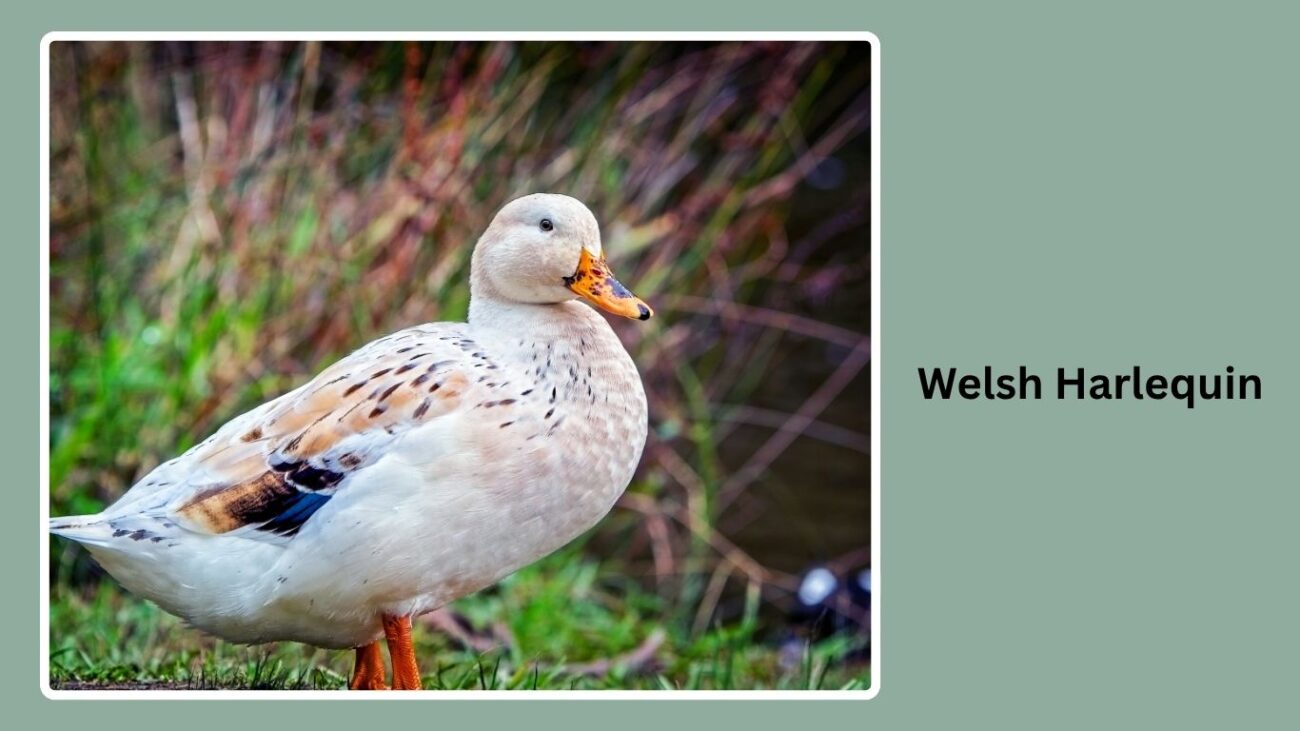
The Welsh Harlequin is a lightweight domestic duck breed developed in Wales during the 1940s. It is known for its calm temperament, excellent egg-laying ability, and attractive plumage. It descends from the Khaki Campbell, itself derived from mallards.
Identification
- Males: Creamy white with brown markings and greenish head
- Females: Pale golden or buff with light mottling
- Light build and upright posture
- Blue-green wing speculum in both sexes
Habitat
Ideal for small farms, gardens, and backyard coops. They thrive in free-range settings with access to clean water and shelter.
Behaviors
Welsh Harlequins are friendly, calm, and active foragers. They are less noisy than other breeds and easy to manage, making them excellent for beginners.
Lifecycle and More
They are prolific layers—up to 250 eggs per year. Hardy and adaptable, they live 8–12 years when cared for properly.
6. Cayuga Duck
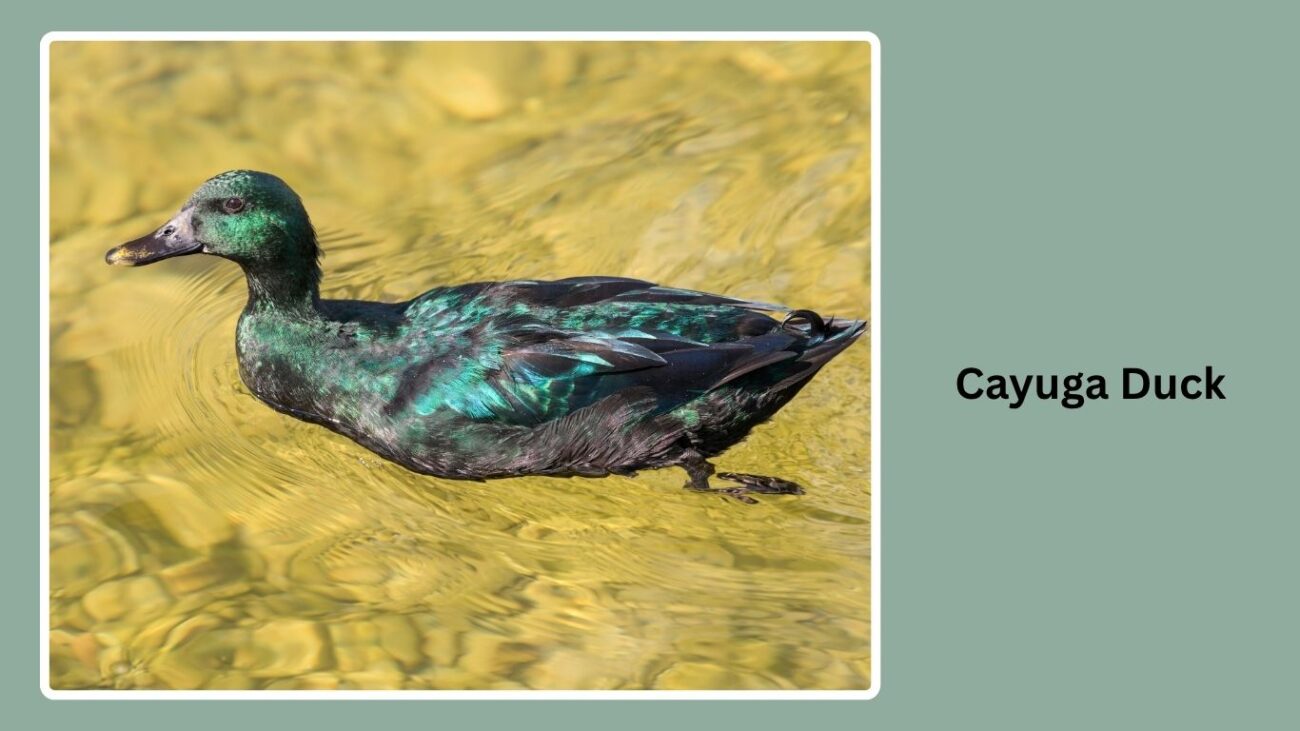
The Cayuga duck is a domestic breed that originated in the United States, named after Cayuga Lake in New York. It is known for its stunning black feathers with a green iridescent sheen and calm disposition. Originally used for meat, it’s now also kept for ornamental and backyard purposes.
Identification
- Glossy black plumage with green sheen
- Black bill, legs, and feet (may lighten with age)
- Medium-sized: 6–8 pounds
- Unique: feathers may turn white in older birds
Habitat
Cayugas thrive in backyard farms, small homesteads, and ornamental ponds. They enjoy access to water but adapt well to land-based settings.
Behaviors
Quiet, calm, and friendly—Cayugas are known as one of the quietest duck breeds. They are good foragers and tolerate cold climates well.
Lifecycle and More
Hens lay dark-colored eggs, often black or gray early in the season. They are good brooders and attentive mothers. Lifespan ranges from 8–12 years.
7. Pekin Duck
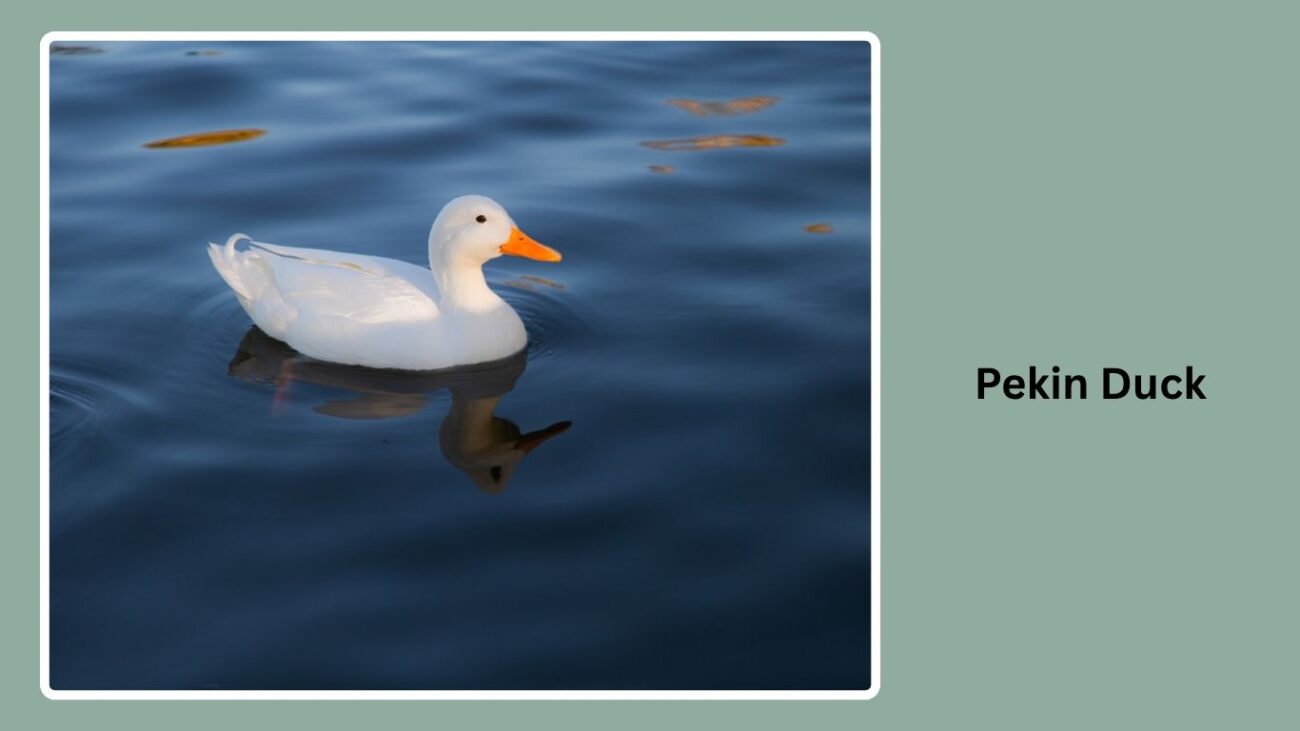
The Pekin duck is a large, white domestic duck originally from China, known worldwide for its meat production. It is one of the most commercially bred ducks and is easily recognized by its bright white feathers and orange bill and feet.
Identification
- Pure white plumage
- Large, heavy body (8–11 pounds)
- Orange bill and legs
- Short neck and upright stance
Habitat
Pekins are typically raised on farms, in backyard setups, or for commercial meat production. They require spacious enclosures and water for hygiene and comfort.
Behaviors
Docile, fast-growing, and hardy. Pekins are not good flyers and tend to waddle slowly. They are friendly and often bond with caretakers.
Lifecycle and More
They grow rapidly and are ready for market by 7–9 weeks. Females lay a good number of eggs but are poor sitters. Average lifespan is 5–10 years.
8. Swedish Blue Duck
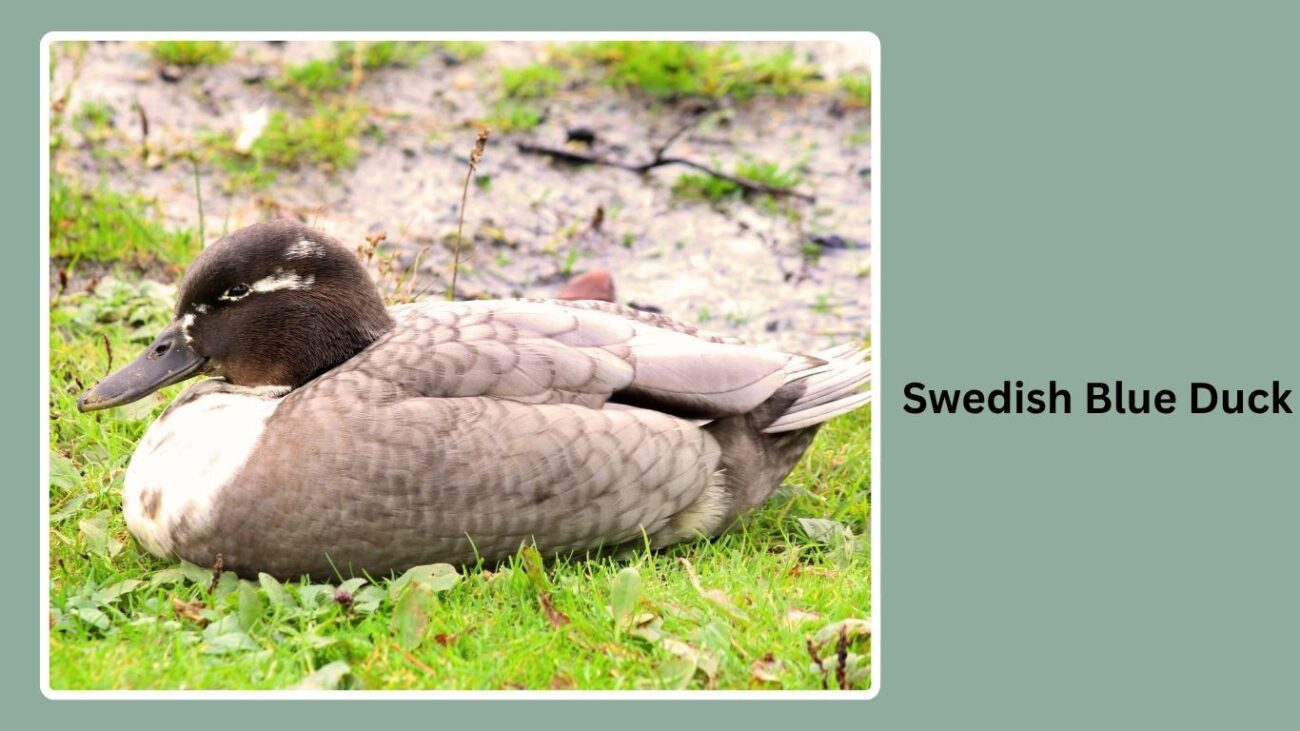
The Swedish Blue is a calm, medium-weight domestic duck breed developed in Sweden. It’s prized for its beautiful slate-blue plumage, hardiness, and dual-purpose use for both meat and eggs. It descends from mallard ancestry and is known for its striking appearance.
Identification
- Slate-blue body with a white chest bib
- Medium size: 5–7 pounds
- Orange legs and gray to yellow bill
- Some may show lighter or darker blue variations
Habitat
They thrive in backyard farms, colder climates, and free-range setups with access to water and shade. They adapt well to variable environments.
Behaviors
Gentle, friendly, and excellent foragers. Swedish Blues are calm and easy to manage, making them a good choice for families and beginners.
Lifecycle and More
They lay 100–150 eggs per year and are reliable layers. Their strong immune systems make them hardy in harsh conditions. Lifespan is 8–12 years.
9. Khaki Campbell

The Khaki Campbell is a lightweight, high-performing egg-laying duck developed in England. It is a mix of mallard, Rouen, and runner duck ancestry. Known for its tan-brown color, it’s one of the best domestic ducks for consistent egg production.
Identification
- Khaki-brown plumage throughout
- Males may have a darker olive-brown head
- Lean, upright body
- Light orange legs and medium-length neck
Habitat
Ideal for homesteads, farms, and backyard coops. They are highly active and do best in spaces where they can forage freely.
Behaviors
Very active, alert, and industrious. Khaki Campbells are less sociable than other breeds but are excellent foragers and not too noisy.
Lifecycle and More
Can lay up to 300 eggs annually. They mature early and are not typically broody. With proper care, they live around 8–10 years.
10. Mallard × American Black Duck Hybrid

This hybrid occurs naturally where the ranges of the mallard (Anas platyrhynchos) and the American black duck (Anas rubripes) overlap, particularly in eastern North America. The hybrid is a mix of both species, often showing blended traits.
Identification
- Plumage: Intermediate between mallard and black duck
- Males: May show partial green head, duller than pure mallard
- Females: Resemble black ducks but lighter
- Blue speculum bordered faintly in white
- Bill color and body tone vary greatly
Habitat
These hybrids inhabit marshes, lakes, rivers, and coastal wetlands. They thrive in both freshwater and brackish environments typical of eastern U.S. duck habitats.
Behaviors
Behaviors mirror both parent species—dabbling for food, forming pairs during breeding season, and migrating in colder months. Often seen in mixed flocks.
Lifecycle and More
Hybridization is common in overlap zones and can be fertile. Conservationists monitor these crosses because they may impact the genetic integrity of the American black duck.
11. Mallard × Mexican Duck Hybrid
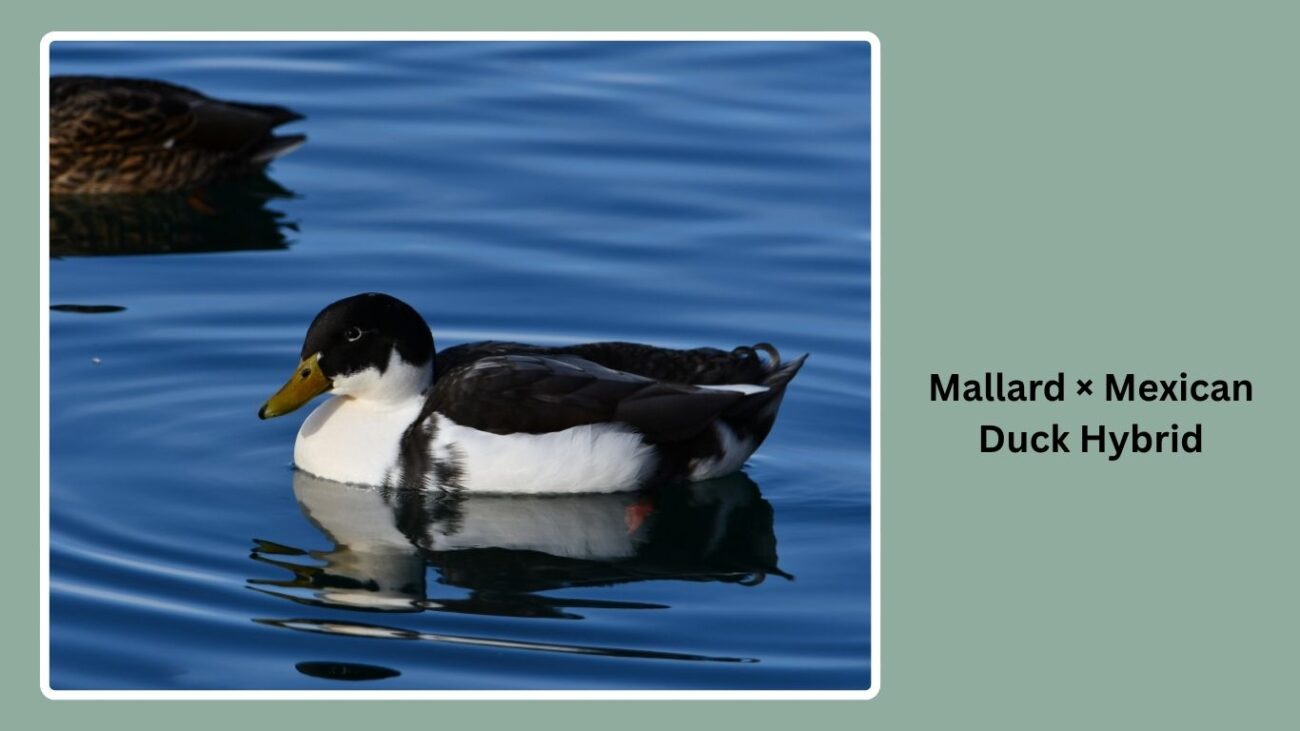
This hybrid results from interbreeding between the wild mallard and the Mexican duck (Anas diazi), primarily in the southwestern U.S. and northern Mexico. These hybrids are common and often difficult to distinguish from pure species.
Identification
- Overall darker body than a mallard
- Head may show partial green sheen
- Less contrast between head and body than in pure mallards
- Mottled brown appearance with varying throat markings
- Blue speculum with faint white edging
Habitat
Found in warm wetland areas—marshes, ponds, and rivers—in Texas, New Mexico, Arizona, and northern Mexico. Prefers lowland freshwater zones.
Behaviors
Dabbling feeders, forming seasonal pairs. These hybrids may behave more like Mexican ducks, staying in smaller ranges without extensive migration.
Lifecycle and More
Hybridization with mallards threatens the purity of the Mexican duck gene pool. Conservation efforts are underway to preserve the distinctiveness of Anas diazi.
12. Manky Mallard
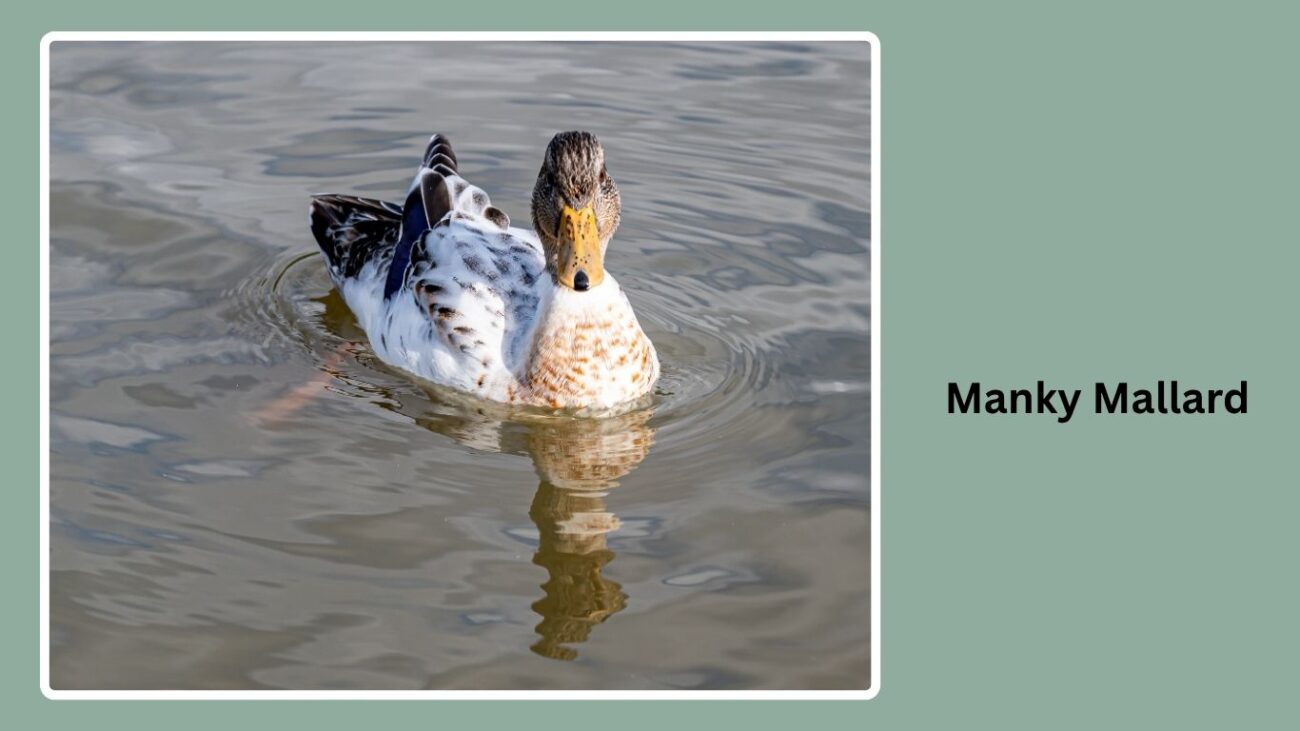
“Manky Mallard” is a non-scientific term used to describe domestic mallard hybrids or color mutations seen in parks and urban areas. These ducks often result from crossbreeding between wild mallards and various domestic breeds, leading to a wide variety of unusual plumage colors and body shapes.
Identification
- Highly variable in color: white, black, piebald, mottled, or mixed
- May show partial or faded green on the head
- Size and shape vary depending on domestic lineage
- May have curled tail feathers or abnormal wing structure
Habitat
Commonly found in city parks, ornamental ponds, and near humans. They depend on people for food and are not typically suited for wild survival.
Behaviors
Tame and used to human presence. They often compete with wild ducks and may have reduced flight ability. Many are friendly and gather in large flocks around food sources.
Lifecycle and More
Manky mallards may reproduce with both domestic and wild mallards, leading to even more genetic variation. Lifespan depends on environment—typically 5–10 years in urban settings.
13. Greenland Mallard (Anas platyrhynchos conboschas)
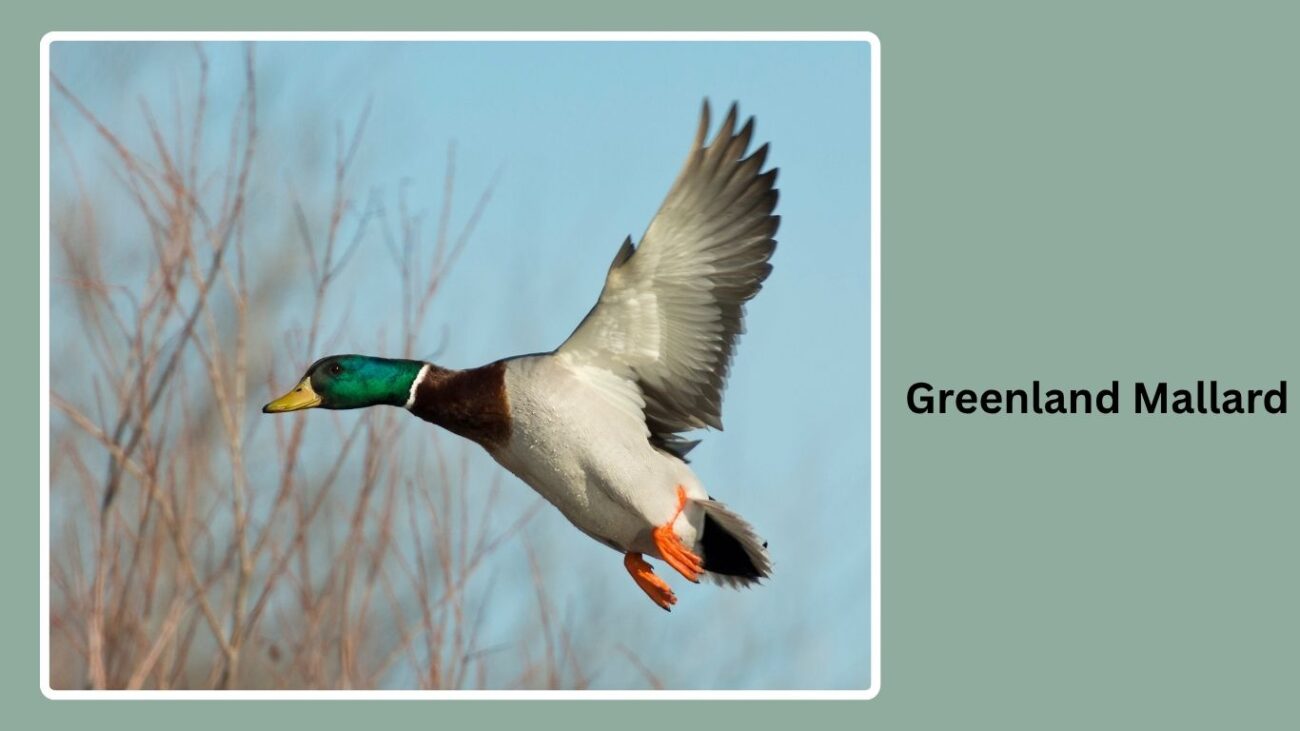
The Greenland Mallard is a lesser-known subspecies of mallard found primarily in Greenland. It is adapted to colder climates and has physical differences from the typical wild mallard, such as paler coloration and a bulkier body.
Identification
- Males: Lighter green head with pale brown or gray chest
- Females: Paler than standard wild females
- Overall bulkier frame
- May lack strong white neck ring seen in wild mallards
Habitat
Found in Arctic tundra wetlands, coastal lagoons, and freshwater lakes in Greenland. They nest near the ground and stay in isolated breeding areas.
Behaviors
Solitary or in small groups. Behaviors are similar to mallards—dabbling for food, forming seasonal pair bonds—but they are more adapted to harsh, cold environments.
Lifecycle and More
Breed during short Arctic summers. Ducklings grow quickly due to short seasons. Migration behavior is less understood but likely involves short-range movement to ice-free waters.
FAQs
Are all domestic ducks descended from mallards?
Yes, almost all domestic duck breeds (except the Muscovy duck) are descended from the wild mallard (Anas platyrhynchos). Selective breeding has created various sizes, colors, and purposes.
Can mallards and domestic ducks interbreed?
Absolutely. Mallards readily breed with domestic ducks, producing fertile offspring. These hybrids are often seen in parks and are commonly referred to as “manky mallards.”
What is the difference between a Rouen and a wild mallard?
The Rouen resembles a mallard in coloration but is much larger and heavier. Rouens are domestic ducks bred for meat and do not fly well, unlike their wild counterparts.
Do male and female mallards look the same?
No. Male mallards (drakes) have bright green heads, yellow bills, and chestnut breasts, while females are mottled brown with orange bills—providing camouflage during nesting.
Are mallard hybrids a threat to wild duck populations?
In some cases, yes. Hybridization with mallards can dilute the gene pool of other species like the Mexican duck or American black duck, threatening their genetic integrity and long-term survival.


